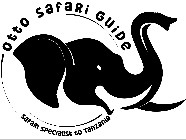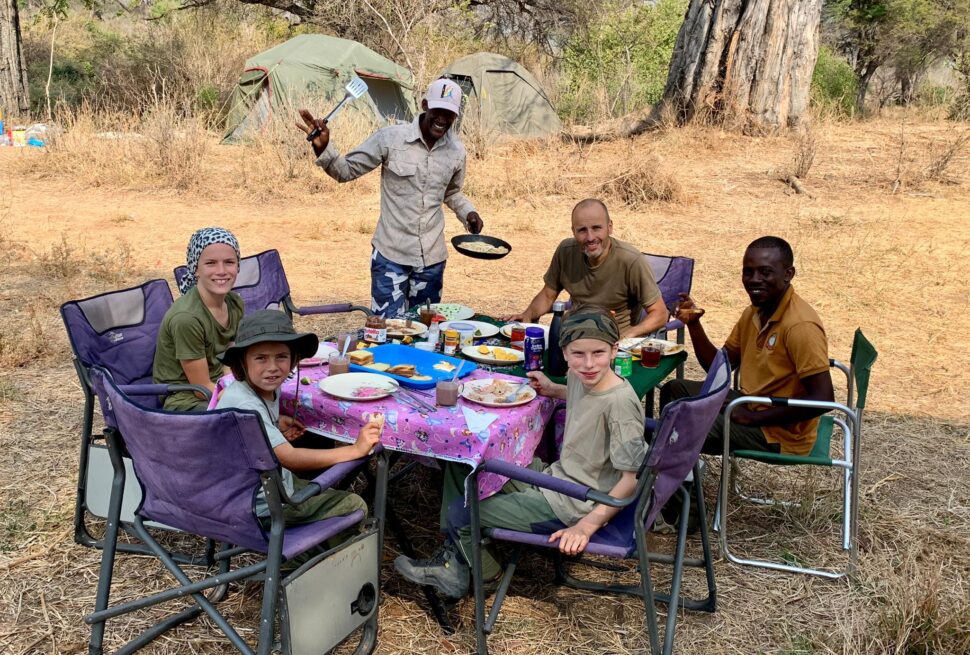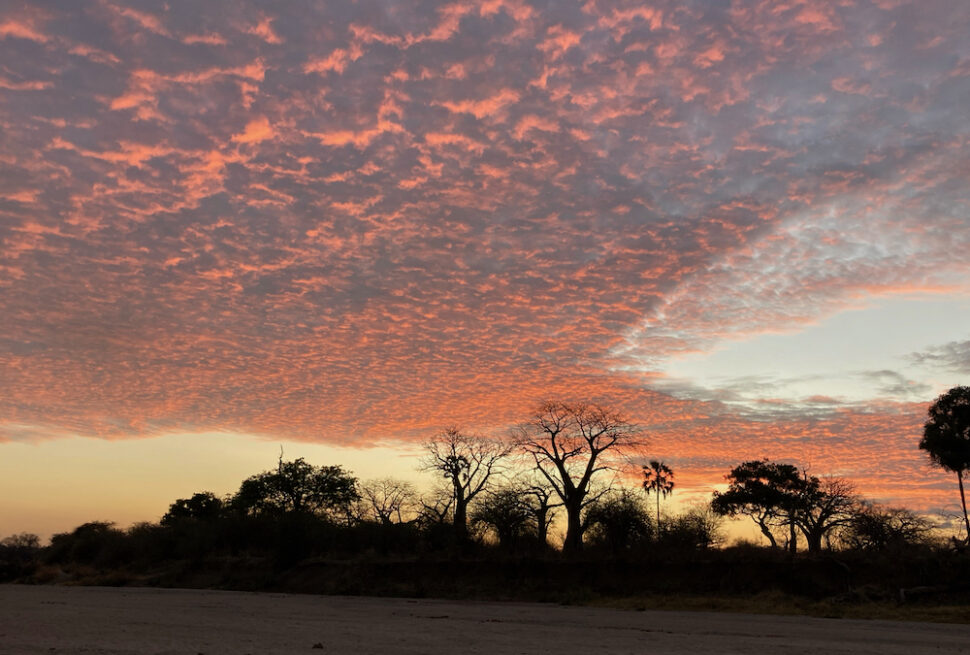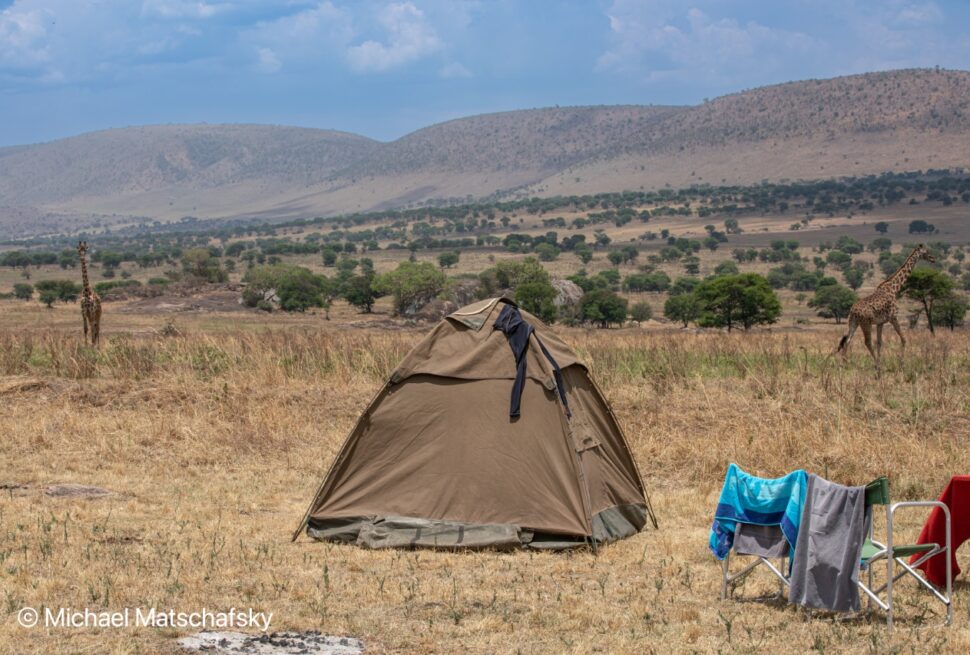Introduction: The Great Wildebeest Migration stands as one of the most extraordinary natural events on the planet, captivating the hearts of wildlife enthusiasts and adventurers alike. This awe-inspiring journey involves vast herds of wildebeest, zebras, and gazelles traversing the Serengeti ecosystem in search of greener pastures, creating a mesmerizing spectacle of life, survival, and renewal.
How to Get to Serengeti: Getting to the Serengeti is an adventure in itself. The main gateway is through Kilimanjaro International Airport (JRO) or Julius Nyerere International Airport (DAR). From there, you can choose to fly directly to Seronera Airstrip in the heart of the Serengeti or opt for a scenic drive from Arusha, taking in the beauty of the Tanzanian landscapes.
When is the Best Time to Go for Great Wildebeest Migration: Timing is crucial to witness the migration at its peak. The best time to go for the Wildebeest Migration is during the dry season from late June to October. This period is marked by river crossings, providing a thrilling spectacle as wildebeest navigate crocodile-infested waters. For calving season, January to February in the southern Serengeti is ideal, offering a unique opportunity to witness the birth of thousands of calves.
Where is Best to Go for Great Wildebeest Migration: The Serengeti is vast, but specific regions are prime for witnessing the great wildebeest migration. The Northern Serengeti, particularly the Mara River, is renowned for dramatic river crossings. The Central Serengeti around Seronera Valley offers year-round wildlife viewing. The Southern Serengeti and Ndutu Plains are ideal during calving season.
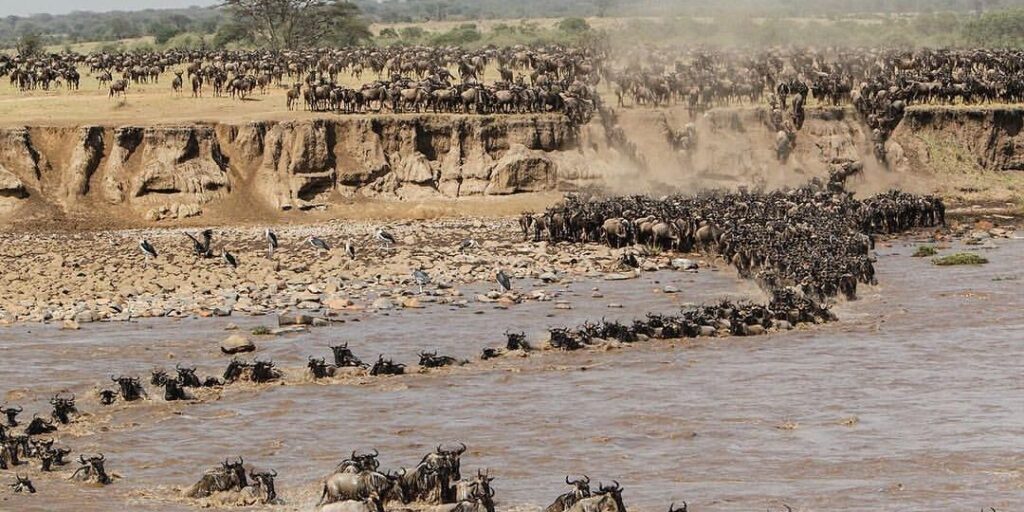
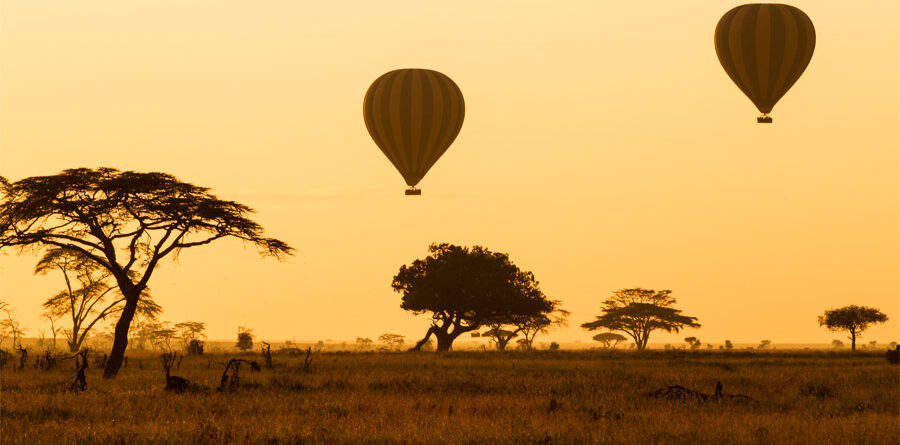
The Annual Circuit
The migration follows a circular route that spans the Serengeti National Park in Tanzania and the Maasai Mara National Reserve in Kenya. This cyclical journey covers approximately 1,200 miles, a testament to the remarkable endurance and navigation skills of these resilient animals.
The Four Stages of the Great Wildebeest Migration
Calving Season (December to March)
The remarkable journey begins in the Southern Serengeti during the calving season, marked by an influx of vulnerable yet vital newborns. This phase is a testament to the circle of life, as the wildebeest gather in preparation for the journey that lies ahead.
Grumeti River Crossing (June to July)
As the dry season progresses, the herds move northwest, encountering the challenging Grumeti River. The river crossings during this phase are nothing short of dramatic and perilous, with lurking crocodiles creating a scene of survival and instinct. It’s a crucial leg of their journey, highlighting the challenges these resilient animals face.
Mara River Crossing (August to October)
The Mara River crossing is a pivotal and dramatic event during the Great Wildebeest Migration in East Africa. This natural spectacle occurs annually as hundreds of thousands of wildebeest, accompanied by zebras and other herbivores, traverse the Mara River in search of greener pastures. The crossing is a defining moment in the migration cycle and is renowned for its intensity and the challenges it presents to the migrating animals.
Timing of the Mara River Crossing:
The Mara River crossing typically takes place from August to October, marking the climax of the migration. During this period, the herds, having journeyed from the southern Serengeti, reach the banks of the Mara River, which forms the border between Tanzania and Kenya.
Challenges Faced by the Wildebeest:
- Strong River Currents:
- The Mara River is characterized by strong and unpredictable currents, adding a level of difficulty to the crossing. The rushing waters can be treacherous, especially for the young and vulnerable wildebeest.
- Predator Presence:
- The river crossing attracts predators, such as crocodiles, lions, and hyenas, creating a perilous environment for the migrating herds. The predators keenly anticipate this event as it provides an opportunity for them to target weakened or inexperienced animals.
Factors Influencing the Crossing:
- Search for Greener Pastures:
- The primary motivation behind the Mara River crossing is the quest for fresh grazing lands. The herds follow the rains and nutrient-rich grasses, and the river crossing is a crucial step in accessing the bountiful pastures on the other side.
- Herding Instinct:
- The wildebeest exhibit a remarkable herding instinct during the crossing. They gather on the riverbanks, sometimes hesitating for extended periods as they assess the dangers posed by the swirling waters and potential predators.
Return to the Southern Serengeti (November)
As the short rains begin, signaling the end of the dry season, the herds embark on their return journey to the Southern Serengeti. This completes the annual circuit and sets the stage for the next calving season, perpetuating the incredible cycle of life in the Serengeti.
What to Do While in Great Wildebeest Migration:
- Game Drives: Explore the Serengeti on exhilarating game drives, witnessing the incredible diversity of wildlife.
- Hot Air Balloon Safari: Experience the migration from a unique perspective with a hot air balloon safari, offering breathtaking aerial views.
- Cultural Encounters: Visit local Maasai communities to gain insights into their traditional way of life and cultural practices.
- Photography: Capture the awe-inspiring moments of the migration with your camera, preserving memories for a lifetime.
How to Plan a Safari for Great Wildebeest Migration:
- Choose the Right Time: Plan your safari during the dry season for river crossings or calving season for an intimate experience.
- Select the Ideal Route: Pick a route that aligns with the migration’s location – Northern, Central, or Southern Serengeti.
- Accommodations: Book accommodations in advance, ranging from luxury lodges to mobile tented camps for an authentic safari experience.
- Professional Guides: Partner with experienced guides who understand the migration patterns, ensuring you don’t miss key events.
Accommodations Guide:
- Luxury Lodges: Experience unparalleled comfort and service at lodges like Singita Sasakwa Lodge or Four Seasons Safari Lodge.
- Tented Camps: Opt for mobile tented camps like &Beyond Serengeti Under Canvas for a closer connection to the wild.
- Budget-Friendly Options: Affordable options like campsites and budget lodges cater to those seeking a memorable yet economical safari.
In conclusion, the Serengeti Wildebeest Migration is a bucket-list-worthy experience that unveils the raw beauty and drama of the natural world. By planning your safari strategically, you can immerse yourself in this extraordinary spectacle, creating memories that will last a lifetime.
